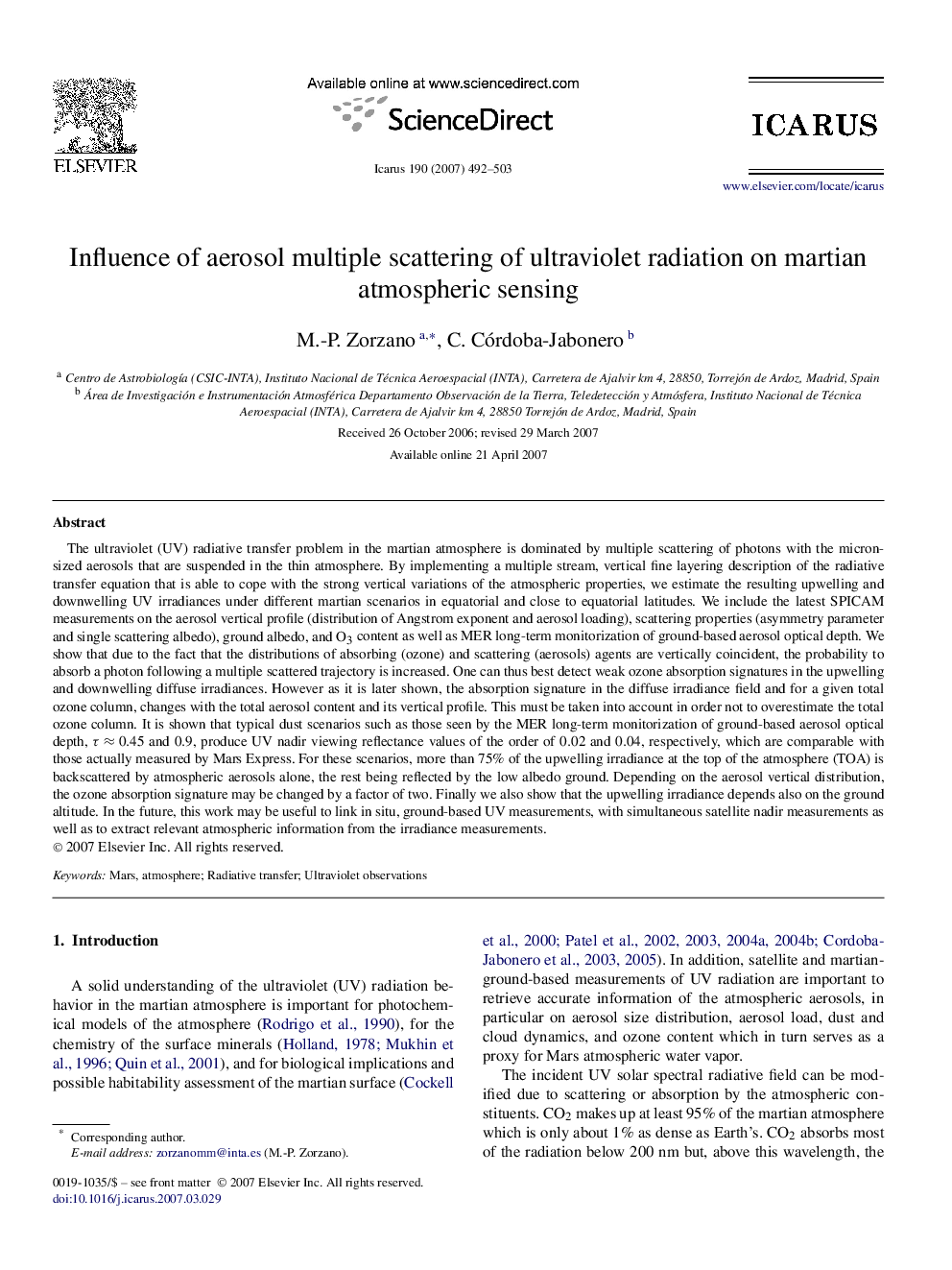| Article ID | Journal | Published Year | Pages | File Type |
|---|---|---|---|---|
| 1775299 | Icarus | 2007 | 12 Pages |
The ultraviolet (UV) radiative transfer problem in the martian atmosphere is dominated by multiple scattering of photons with the micron-sized aerosols that are suspended in the thin atmosphere. By implementing a multiple stream, vertical fine layering description of the radiative transfer equation that is able to cope with the strong vertical variations of the atmospheric properties, we estimate the resulting upwelling and downwelling UV irradiances under different martian scenarios in equatorial and close to equatorial latitudes. We include the latest SPICAM measurements on the aerosol vertical profile (distribution of Angstrom exponent and aerosol loading), scattering properties (asymmetry parameter and single scattering albedo), ground albedo, and O3 content as well as MER long-term monitorization of ground-based aerosol optical depth. We show that due to the fact that the distributions of absorbing (ozone) and scattering (aerosols) agents are vertically coincident, the probability to absorb a photon following a multiple scattered trajectory is increased. One can thus best detect weak ozone absorption signatures in the upwelling and downwelling diffuse irradiances. However as it is later shown, the absorption signature in the diffuse irradiance field and for a given total ozone column, changes with the total aerosol content and its vertical profile. This must be taken into account in order not to overestimate the total ozone column. It is shown that typical dust scenarios such as those seen by the MER long-term monitorization of ground-based aerosol optical depth, τ≈0.45τ≈0.45 and 0.9, produce UV nadir viewing reflectance values of the order of 0.02 and 0.04, respectively, which are comparable with those actually measured by Mars Express. For these scenarios, more than 75% of the upwelling irradiance at the top of the atmosphere (TOA) is backscattered by atmospheric aerosols alone, the rest being reflected by the low albedo ground. Depending on the aerosol vertical distribution, the ozone absorption signature may be changed by a factor of two. Finally we also show that the upwelling irradiance depends also on the ground altitude. In the future, this work may be useful to link in situ, ground-based UV measurements, with simultaneous satellite nadir measurements as well as to extract relevant atmospheric information from the irradiance measurements.
